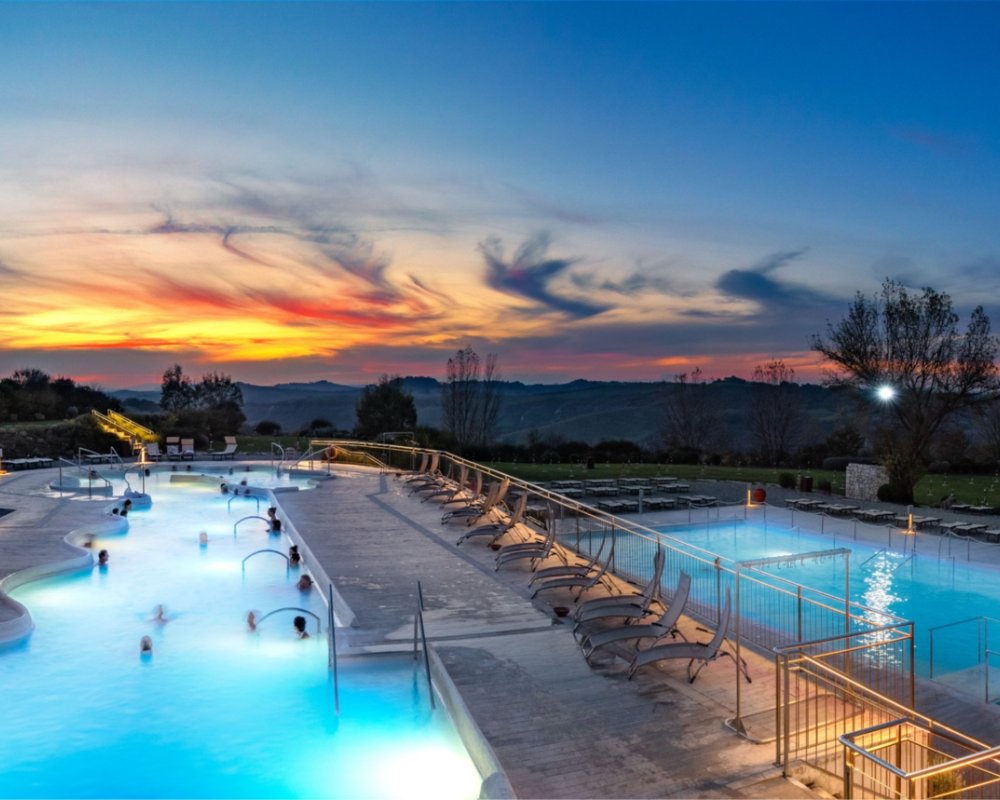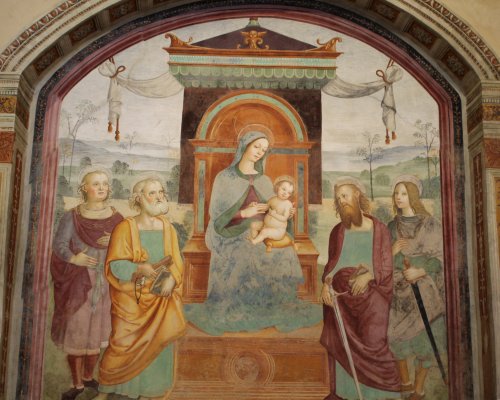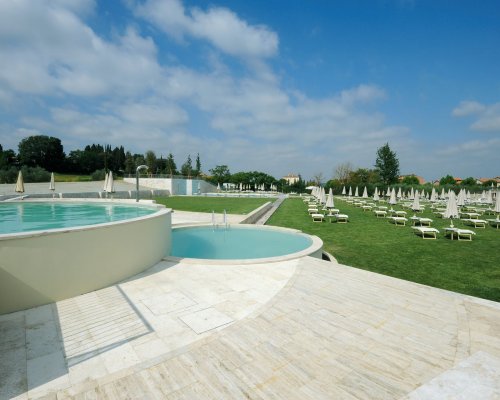Discover the capitals of thermal waters and culture
Everyone has needed some time for well-being and relaxation. For this, Tuscany is the perfect place to sit back and recovering your energy for taking on life’s daily challenges.
This is an itinerary leaving from Siena, winding through the Valdichiana and ending in Chiusi, the home of the Etruscans (among others).
Leaving form Siena, you can cross the Crete Senesi until you get to the first major city, Asciano. In this lunar-like territory, you will be able to see the characteristic geological formations of the Crete: the Calanchi and Biancane. The former are deep recesses in the land caused by torrential water flow, while the latter are soft, beige-coloured hills that have been rounded by atmosphere agents. This is where the precious and fragrant Crete Senesi truffle is harvested.
Once in Asciano, you can start by visiting the Church of Sant’Agata, which despite dating to the 11th century, is home to two Sienese Renaissance masterpieces: a Madonna and Child by Signorelli and a Pietà by Il Sodoma. Your visit to the town can continue to the late-Gothic Church of Sant’Agostino. Before heading to the first stop dedicated to well-being, enjoy a view of piazza del Grano, home to a travertine fountain made by Paolo Ghini, a beautiful trace of 15th-century sculptural styles.
Leaving form Siena, you can cross the Crete Senesi until you get to the first major city, Asciano. In this lunar-like territory, you will be able to see the characteristic geological formations of the Crete: the Calanchi and Biancane. The former are deep recesses in the land caused by torrential water flow, while the latter are soft, beige-coloured hills that have been rounded by atmosphere agents. This is where the precious and fragrant Crete Senesi truffle is harvested.
Once in Asciano, you can start by visiting the Church of Sant’Agata, which despite dating to the 11th century, is home to two Sienese Renaissance masterpieces: a Madonna and Child by Signorelli and a Pietà by Il Sodoma. Your visit to the town can continue to the late-Gothic Church of Sant’Agostino. Before heading to the first stop dedicated to well-being, enjoy a view of piazza del Grano, home to a travertine fountain made by Paolo Ghini, a beautiful trace of 15th-century sculptural styles.
Leave Asciano behind and head north, towards Rapolano Terme. Here, the warm waters and steams pumping from underground have beneficial properties that have been known and benefitted from for centuries, so much so that the town hosted Giuseppe Garibaldi when he was looking to cure his injuries from the Battle of Aspromonte. You can enjoy a relaxing day in one of the two complexes located in Rapolano Terme, Querciolaia and Terme S. Giovanni. But the city is known for more than just its curative waters and for being one of the most important centres for travertine mining: it’s also an interesting village to visit in and of itself. We recommend stopping by the Museum of the Old Grange and Olive Oil.
Leave Asciano behind and head north, towards Rapolano Terme. Here, the warm waters and steams pumping from underground have beneficial properties that have been known and benefitted from for centuries, so much so that the town hosted Giuseppe Garibaldi when he was looking to cure his injuries from the Battle of Aspromonte. You can enjoy a relaxing day in one of the two complexes located in Rapolano Terme, Querciolaia and Terme S. Giovanni. But the city is known for more than just its curative waters and for being one of the most important centres for travertine mining: it’s also an interesting village to visit in and of itself. We recommend stopping by the Museum of the Old Grange and Olive Oil.
After a restorative stop in Rapolano Terme, your journey can continue towards the Valdichiana, this time to the thermal baths near Renaissance Montepulciano, in the hamlet of Sant’Albino. The waters here were studied for the first time in the 16th century by Andrea Bacci in his treatise De Thermis. Close by, you can visit Montepulciano. Before climbing to the top of the city’s historic centre, visit the Renaissance Church of San Biagio, designed by Antonio da Sangallo il Vecchio and a mandatory stop for anyone looking to understand the true essence of Renaissance art in the Siena area. With its white marble and Greek-cross plan, the church is an architectural masterpiece of its era. Continuing towards the city, you can enjoy a historic centre filled with 15th and 16th-century buildings.
After a restorative stop in Rapolano Terme, your journey can continue towards the Valdichiana, this time to the thermal baths near Renaissance Montepulciano, in the hamlet of Sant’Albino. The waters here were studied for the first time in the 16th century by Andrea Bacci in his treatise De Thermis. Close by, you can visit Montepulciano. Before climbing to the top of the city’s historic centre, visit the Renaissance Church of San Biagio, designed by Antonio da Sangallo il Vecchio and a mandatory stop for anyone looking to understand the true essence of Renaissance art in the Siena area. With its white marble and Greek-cross plan, the church is an architectural masterpiece of its era. Continuing towards the city, you can enjoy a historic centre filled with 15th and 16th-century buildings.
The itinerary ends in the capital of the hot springs: Chianciano Terme. With one of the most equipped centres in Italy, Chianciano is able host visitors of all kinds. Here, you can gift yourself luxury treatments or treatments for liver and kidney problems, all of which work wonders. You can stick around for hours, far from your worries and stress, strolling through the resort’s parks, taking mud baths, sipping on water filled with beneficial properties and visiting the beautiful historic centre, full of traces dating to the late Renaissance, like the churches of the Compagnia and Madonna della Rosa. Close to Chianciano is Chiusi, home to late-15th-century artworks like a panel painting by Girolamo di Benvenuto depicting the Madonna and Child Enthroned and Bernardino Fungai’s Adoration with Saints Secondiano and Jerome.
The itinerary ends in the capital of the hot springs: Chianciano Terme. With one of the most equipped centres in Italy, Chianciano is able host visitors of all kinds. Here, you can gift yourself luxury treatments or treatments for liver and kidney problems, all of which work wonders. You can stick around for hours, far from your worries and stress, strolling through the resort’s parks, taking mud baths, sipping on water filled with beneficial properties and visiting the beautiful historic centre, full of traces dating to the late Renaissance, like the churches of the Compagnia and Madonna della Rosa. Close to Chianciano is Chiusi, home to late-15th-century artworks like a panel painting by Girolamo di Benvenuto depicting the Madonna and Child Enthroned and Bernardino Fungai’s Adoration with Saints Secondiano and Jerome.


